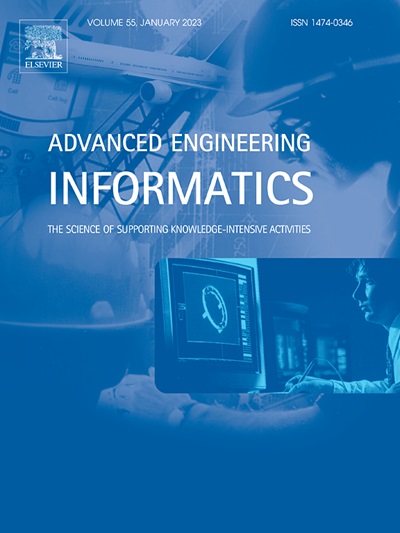Point-driven robot selective grinding method based on region growing for turbine blade
IF 8
1区 工程技术
Q1 COMPUTER SCIENCE, ARTIFICIAL INTELLIGENCE
引用次数: 0
Abstract
The complex geometric characteristics and the uneven allowance distribution of turbine blades restrict the grinding accuracy of robots. A novel point-driven robot selective grinding method based on region growing is proposed to enhance the surface accuracy of the turbine blade. First, this method calculates the curvature of every surface point among the turbine blade point clouds located at the slicing plane. Then, all surface points are segmented into intake edge points, exhaust edge points, convex points, and concave points. Moreover, the ideal normal grinding force (INGF) of every surface point at blade edges and profile is calculated based on the allowance distribution and material removal rate of belt grinding. INGF values, as the main characteristics of these surface points, are used in the voxel-based region growing to obtain multiple grinding regions in the blade surface, and their corresponding INGF values are calculated. Finally, the planned robotic grinding trajectories are modified based on the INGF values of these grinding regions. Robotic grinding experiments with the blade point clouds are conducted. The surface accuracy of the turbine blade with the proposed method is improved by 46.49% compared to that with the traditional grinding method.
基于区域生长的点驱动机器人涡轮叶片选择性磨削方法
涡轮叶片复杂的几何特征和不均匀的余量分布限制了机器人的打磨精度。为提高涡轮叶片的表面精度,本文提出了一种基于区域生长的新型点驱动机器人选择性打磨方法。首先,该方法计算位于切片平面的涡轮叶片点云中每个曲面点的曲率。然后,将所有表面点划分为进气边缘点、排气边缘点、凸点和凹点。此外,根据砂带磨削的余量分布和材料去除率,计算叶片边缘和轮廓上每个表面点的理想法向磨削力(INGF)。INGF值作为这些表面点的主要特征,被用于基于体素的区域生长,以获得叶片表面的多个磨削区域,并计算其相应的INGF值。最后,根据这些打磨区域的 INGF 值修改计划的机器人打磨轨迹。利用叶片点云进行机器人打磨实验。与传统的打磨方法相比,采用建议方法打磨涡轮叶片的表面精度提高了 46.49%。
本文章由计算机程序翻译,如有差异,请以英文原文为准。
求助全文
约1分钟内获得全文
求助全文
来源期刊

Advanced Engineering Informatics
工程技术-工程:综合
CiteScore
12.40
自引率
18.20%
发文量
292
审稿时长
45 days
期刊介绍:
Advanced Engineering Informatics is an international Journal that solicits research papers with an emphasis on 'knowledge' and 'engineering applications'. The Journal seeks original papers that report progress in applying methods of engineering informatics. These papers should have engineering relevance and help provide a scientific base for more reliable, spontaneous, and creative engineering decision-making. Additionally, papers should demonstrate the science of supporting knowledge-intensive engineering tasks and validate the generality, power, and scalability of new methods through rigorous evaluation, preferably both qualitatively and quantitatively. Abstracting and indexing for Advanced Engineering Informatics include Science Citation Index Expanded, Scopus and INSPEC.
 求助内容:
求助内容: 应助结果提醒方式:
应助结果提醒方式:


